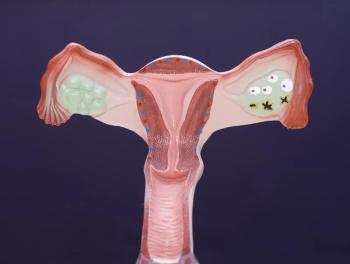
Vitamin C Boosts Effects of Chemotherapy and Lessens Toxicity
A new study found that high concentrations of vitamin C increased the effectiveness of chemotherapy in an ovarian cancer mouse model. A high-dose delivery of the vitamin also resulted in lesser toxicity from chemotherapy in cancer patients.
A new study found that high concentrations of vitamin C increased the effectiveness of chemotherapy in an ovarian cancer mouse model. A high-dose delivery of the vitamin also resulted in lesser toxicity from chemotherapy in cancer patients. While cancer clinical trials have previously not shown a benefit of oral vitamin C (ascorbate), Yan Ma, PhD, Qi Chen, PhD, and Jeanne Drisko, MD, of the University of Kansas Medical Center in Kansas City, Kansas, and colleagues now demonstrate that very highly concentrated vitamin C, administered intravenously, can produce high enough concentrations in the blood and other tissues to kill tumor cells but not harm normal tissues. The results are
The authors first delivered the high doses of vitamin C into seven human ovarian cancer cells, and into a mouse model of a human ovarian tumor. Ascorbate plus the chemotherapy combination of carboplatin and paclitaxel-the chemotherapy combination currently used to treat ovarian cancer-synergistically inhibited ovarian cancer in the mouse model.
Concentrations of vitamin C that can have an effect on cancer cells are 10 to 100 times those that are normally present in the body-a maximum of 200 millimolars by some measurements. Ingested vitamin C is absorbed in the digestive tract, which controls the amount of the vitamin released into the blood and excreted in urine. But a direct IV injection can deliver the vitamin directly to the tissue. Within the interstitial fluid between cells, high concentrations (millimolar rather than physiological micromolar levels) of ascorbate create a pro-oxidant environment that allows the formation of hydrogen peroxide, which is turned into reactive oxygen species (ROS) within cells, resulting in oxidative stress and DNA damage. Concentrations of both formed ROS and hydrogen peroxide are poisonous for tumor cells but not normal cells.
“Intravenous ascorbate generates hydrogen peroxide in both normal and cancerous tissues, but cancer cells are more susceptible to DNA damage and ATP [adenosine triphosphate] depletion induced by hydrogen peroxide,” Drisko and Ma told Cancer Network. “Because cancer cells are actively dividing compared to most normal cells, their DNA is more fragile to oxidative stress.”
Hydrogen peroxide in the blood is harmful; IV ascorbate does not form hydrogen peroxide in the blood, rather, it is a vehicle to deliver hydrogen peroxide to the extracellular spaces, Drisko and Ma explained. “This is the beauty of the system. Ascorbate acts as a pro-drug to safely deliver the real ‘drug,’ hydrogen peroxide, to the tissues.”
The researchers went a step further to show how ascorbate results in tumor cell death, which was previously unknown. The new study shows that millimolar concentrations of ascorbate induce the DNA damage pathway; deplete the cell’s energy stores of ATP; and activate the ataxia telangiectasia mutated (ATM)/adenosine monophosphate–activated protein kinase (AMPK) pathway, which results in mammalian target of rapamycin (mTOR) inhibition and cell death in the ovarian cancer cells.
In a small phase I/IIA randomized pilot clinical trial in newly diagnosed ovarian cancer patients, the toxicity after administration of high-dose ascorbate and standard paclitaxel/carboplatin chemotherapy was assessed in 25 patients. Chemotherapy was given for 6 months and the ascorbate for 12 months. The addition of ascorbate to the regimen did not increase grade 3/4 toxicities and decreased grade 1 and 2 toxicities substantially, including pancreatic, renal, gastrointestinal, pulmonary, and bone marrow toxicities, as well as infections and neurotoxicities.
How toxicity may be reduced with high-dose ascorbate is still not clear.
At the time of evaluation, the overall survival trended towards improvement in the ascorbate arm. The median time to disease progression was 8.75 months longer in the ascorbate group compared with the placebo group, although the trial was not powered to test the statistical significance of efficacy results.
“Our data here provide strong evidence to justify larger and more robust clinical trials for the detection of efficacy in combining ascorbate with conventional chemotherapy,” concluded the authors. A previous small pancreatic cancer trial of nine patients showed that IV doses of vitamin C were well tolerated and that the patients had tumor shrinkage when given along with gemcitabine.
According to Dr. Melanie J. McConnell, of the Victoria University of Wellington in Wellington, New Zealand, and Dr. Patries M. Herst, of the University of Otago in Wellington, New Zealand, authors of the accompanying editorial, use of high-dose ascorbate as a supportive treatment for cancer patients has been increasing, even though such use is not supported by cancer trials with oral ascorbate. Still, the authors stated that ascorbate may not be a viable option for all tumor types.
Preclinical studies show that the sensitivity of different tumor types to ascorbate varies. The downstream pathways altered as a result of exposure to oxidative stress may also vary, said McConnell and Herst. The way cells react to oxidative stress may also change over time and depend on both internal and external cell factors.
The variation in response to oxidative stress and ROS may at least partly depend on whether the tumor expresses sodium-dependent vitamin C transporters (SVCT1 and SVCT2). Cancers that do not express these transporters, and therefore cannot bring ascorbate into the cell, could be candidates for ascorbate therapy, while those that do express the transporters may be able to use the ascorbate as an antioxidant inside the tumor cell, said McConnell and Herst.
“It is critical to determine both the total antioxidant capacity of tumors and the likely fate of the pharmacological ascorbate in order to identify patients who are most likely to benefit from addition of ascorbate,” concluded McConnell and Herst.
According to Drisko and Ma, intravenous ascorbate also has the potential to treat infections since hydrogen peroxide can kill bacteria and viruses. “Intravenous ascorbate could have promise in treating diseases where hydrogen peroxide has a therapeutic role.”
Newsletter
Stay up to date on recent advances in the multidisciplinary approach to cancer.


















































































